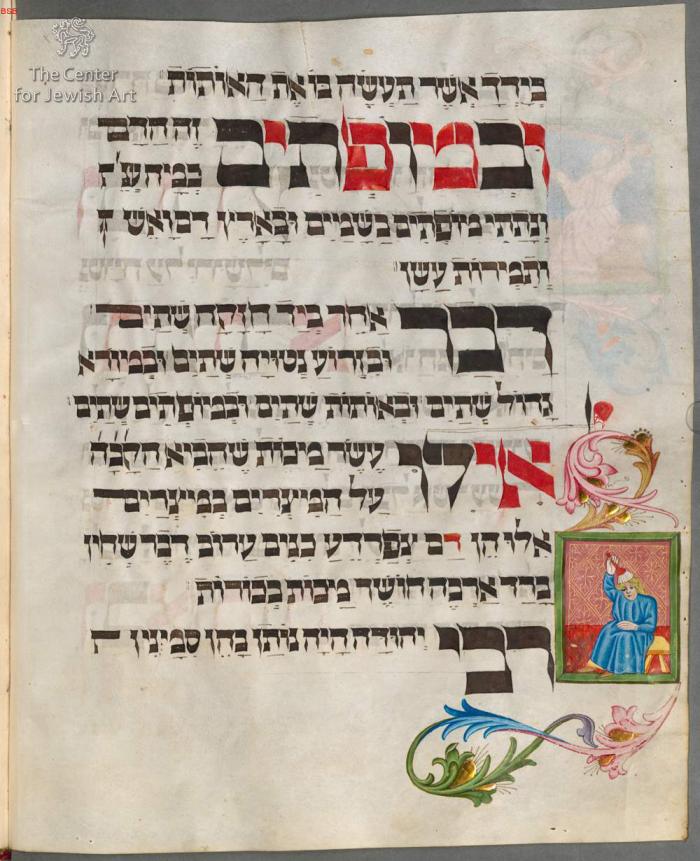Img. ID: 199993

Fol. 17v: In the lower outer margin, next to the list of the plagues which hit Egypt, a panel shows a man seated on a bench brushing his hair to get rid of lice, which fall on to the red tiled floor on the left. The man wears a blue robe and powder gold shoes.
Fleshy, curling acanthus leaves extend from the upper and lower parts of the frame.
Due to lack of space, the ascender and flag of the ל' of the display word אילו, was moved to the outer margin, above the upper scroll of the panel. Similar cases are, fols. 13 (יכול), 20 (על) (cf. fols. 22-22v, 25).
See: General Document for acanthus branches.
| Cod. hebr. 200 (Steinschneider 1895, No. 200)
Fig. 1: Plague of Lice
Tegernsee Haggadah
Munich, BSB Cod. hebr. 200, fol. 17v.
Fig. 2: Plague of Lice
Rylands Sephardi Haggadah
Catalonia, mid-14th century
Manchester, John Rylands Library, Heb. 6, fol. 16
(Loewe, facsimile 1988)
Fig. 3: Plague of Lice
FirstCincinnatiHaggadah
Meir Jaffe (scribe)
Ulm, 1480s
Cincinnati, HUC Klau Lib. MS 444, p. 23
(Optical disc: col. facsims.)
Fig. 4: Treatment for head lice
Hortus Sanitatis, Jacob Meydenbach
Mainz, 1491
Vatican, BAV Stamp. Pal. II 581, fol. SIIIv
(Copyright Science Photo Library)
Lice were one of the ten plagues which hit the Egyptians. In other haggadot all ten plagues usually are depicted. In Sephardi haggadot the iconography of the plague of lice includes Moses and Aaron, while Pharaoh and his people suffer (fig. 2). By contrast, in Ashkenazi and Italo-Ashkenazi haggadot, unidentified people are afflicted with lice (fig. 3) as in the Tegernsee Haggadah (fig. 1). The hairbrush, which is used to remove lice, reflects a detail of everyday life in 15th-centuryGermany. A similar hairbrush appears in contemporary German books (fig. 4).





